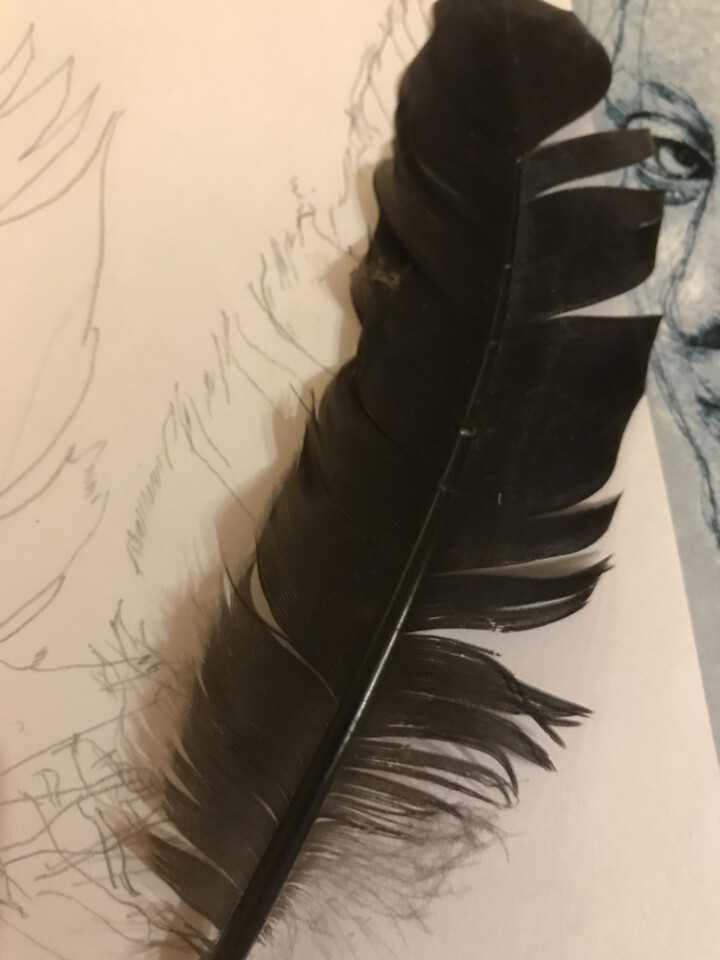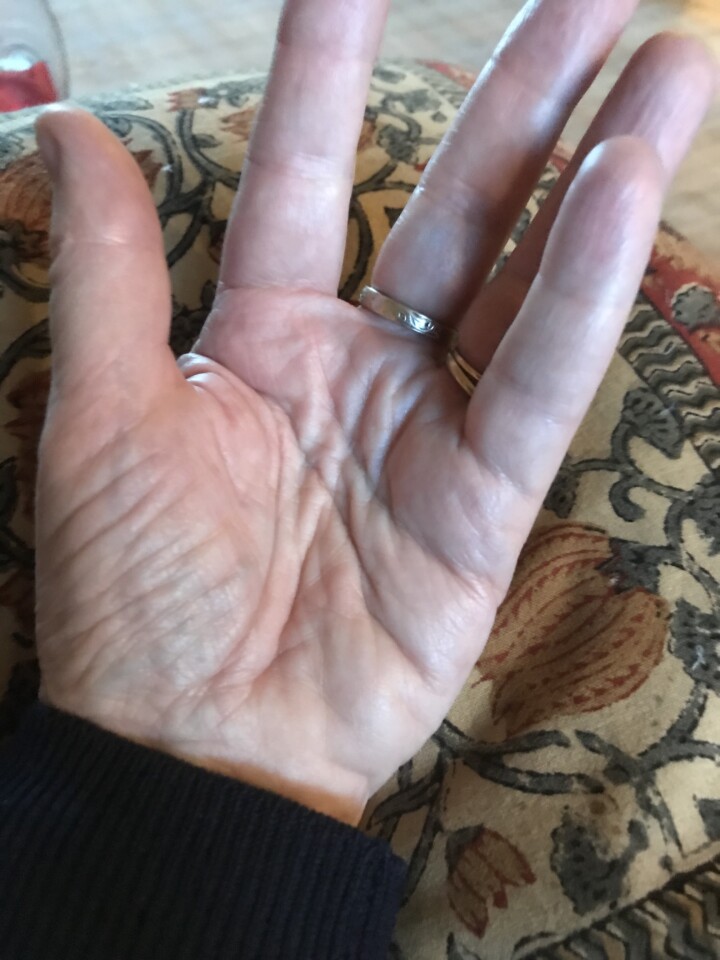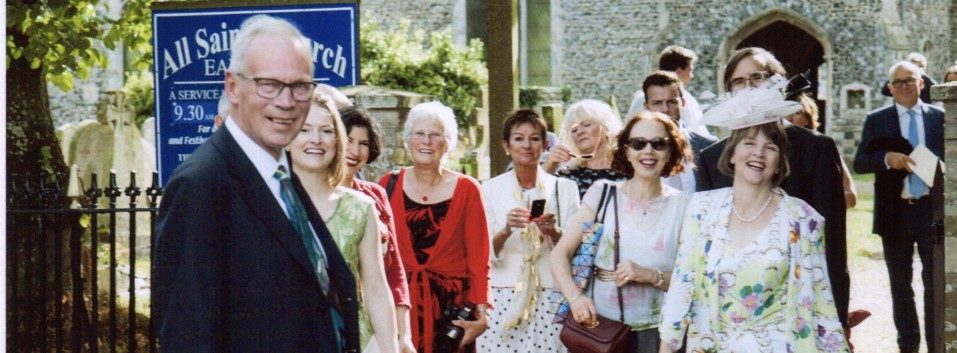Surprisingly, today’s exercise was one I enjoyed, though apparently it’s one that the writer (Betty Edwards, I should use her name) finds many of her pupils hate. The chapter is Perceiving Edges and the exercise is Pure Contour Drawing. One has to set a timer for five minutes, then look at the palm of your non-drawing hand. Curve the hand so that the wrinkles show, start the timer and then draw the lines. Not the outline of the hand, just the wrinkles, very slowly and in as much detail as possible. The important bit is that you look at your hand, not the paper. You just keep drawing, never mind about getting anything in the right place. You’ll end up with a great number of marks on the paper and some of them might be recognisable as bits of the lines on your hand. But it won’t look like a hand. Each wrinkle leads to another wrinkle and then another line and you’ll get lost, but it doesn’t matter.
She suggests you do it again, with other objects and I used a leaf, a lychee and a feather. Surprisingly, the feather turned out very well. The two halves are the wrong way round, no idea how that happened but, not only did I draw it surprisingly accurately (which wasn’t even the intention) but it’s even the right size.


I started, probably wrongly, with the central quill. I did a bold stroke down, then up again, and then started drawing the right side of the feather. When I got to the bottom. I did the fluffy bits – that was where it started to go wrong – and then up the left side, which inexplicably ended up to the right of the right side. No idea. But it was astonishingly accurate and life-size.
So, the critical bit. Betty wanted me to draw very slowly and I didn’t. With five minutes on the clock, I finished with about 20 seconds to spare. I wasn’t as painstaking and observant as I was supposed to be. I don’t care, though. It was fun and freeing.
Why was it freeing, I wondered? I think, not sure, that I knew it didn’t matter; the lines on the hand, that is. I expected it to be totally inaccurate – and, to be fair, I should show you that picture, which is one to laugh at. Also my hand, though I had put a sheet of white paper behind it, not to distract me. It was relaxing and engaging. I had already noticed, when I was doing the drawing of the horse, that I drew without looking at the paper – not the intricate bits, but the long, sweeping lines that had to flow.


Next time, apparently, I’m going to have to draw my actual hand. Eek.

Yay! Really pleased you are beginning to enjoy the process.
Sx
Thank you – no idea how I’ll manage the next exercise, I’m feeling way out of my depth. Doesn’t matter, though, there are no exams, no deadline!
I like contour drawing as warm-ups, especially when I have not done any line work for ages.
When I explained it to Tim, he took a while to get it. He might have used the word psychobabble – but then he compared it to playing tennis, where you can see the ball but not where it hits your racquet. And we extended that to other ball sports. Not an exact analogy, but any way of working out how to understand.